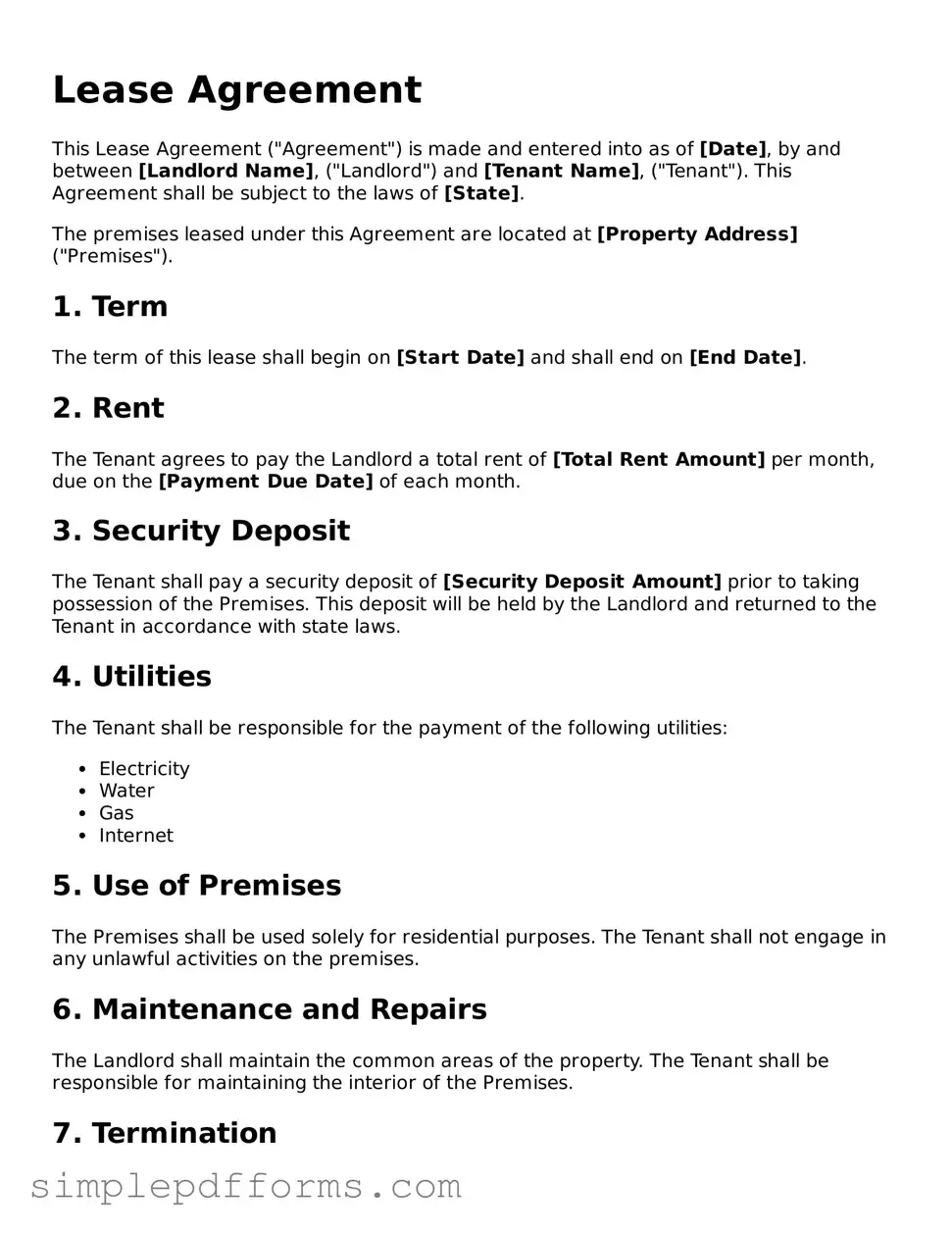Lease Agreement
This Lease Agreement ("Agreement") is made and entered into as of [Date], by and between [Landlord Name], ("Landlord") and [Tenant Name], ("Tenant"). This Agreement shall be subject to the laws of [State].
The premises leased under this Agreement are located at [Property Address] ("Premises").
1. Term
The term of this lease shall begin on [Start Date] and shall end on [End Date].
2. Rent
The Tenant agrees to pay the Landlord a total rent of [Total Rent Amount] per month, due on the [Payment Due Date] of each month.
3. Security Deposit
The Tenant shall pay a security deposit of [Security Deposit Amount] prior to taking possession of the Premises. This deposit will be held by the Landlord and returned to the Tenant in accordance with state laws.
4. Utilities
The Tenant shall be responsible for the payment of the following utilities:
- Electricity
- Water
- Gas
- Internet
5. Use of Premises
The Premises shall be used solely for residential purposes. The Tenant shall not engage in any unlawful activities on the premises.
6. Maintenance and Repairs
The Landlord shall maintain the common areas of the property. The Tenant shall be responsible for maintaining the interior of the Premises.
7. Termination
This Agreement may be terminated by either party with [Notice Period] written notice prior to the intended termination date.
8. Governing Law
This Agreement shall be governed by the laws of the state of [State].
IN WITNESS WHEREOF, the parties hereto have executed this Lease Agreement as of the date first above written.
Signatures
Landlord: ___________________________ Date: _______________
Tenant: _____________________________ Date: _______________
